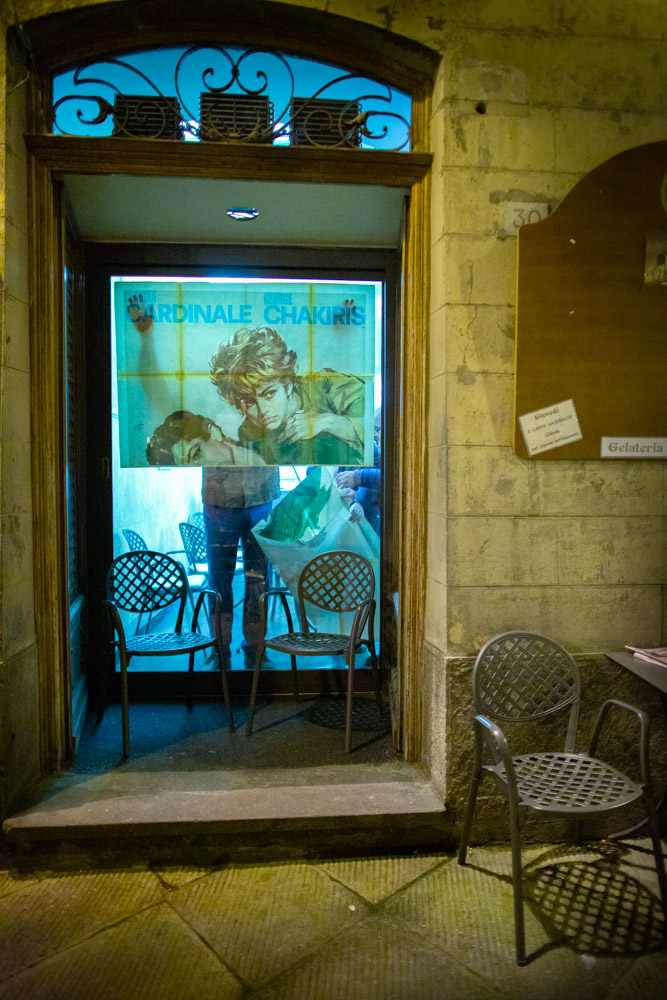
When a goddess descends
In 1963, the most exciting event occurred in our village since Florence smacked down Milan in the big battle of 1440—Claudia Cardinale came to town to shoot the movie La Ragazza di Bube. Her equally gorgeous co-star was George Chakiris, who had just won an Academy Award and a Golden Globe for his performance as gang leader Bernardo Nunez in West Side Story, but today all the old men seem to remember only Claudia. I have not interviewed the older women on the subject. Claudia’s career was just becoming hot, hot, hot as earlier in 1963 she’d starred in Fellini’s 8½ with Marcello Mastroianni, AND with Burt Lancaster in Visconti’s The Leopard. Both films were critically acclaimed and are often cited by critics and scholars as among the greatest films ever made, so when she hit the village to shoot La Ragazza di Bube it was noticed by the locals—they didn’t even need the Esquire article about her, titled “The Next Goddess of Love,” to help form an opinion. Most Americans know her as from the breakthrough film she did the next year, playing Princess Dala in The Pink Panther, as David Niven’s love interest.
The after effects of this brief event in 1963 are everywhere in the village. The movie poster is lovingly displayed in several of the coffee bars. When John was scouting for a shoot and had a tour of the attic of our local theater, the very spot on the floor, tucked under the eves, where Claudia napped between scenes 50 years earlier was pointed out with awe.
But we were lucky enough to be in the piazza when Claudia returned for a visit in honor of the 50th anniversary of the film. The square was cleared of cars for the occasion and packed with about a hundred people, mainly quite old and male, many of whom I barely recognized as they were all cleaned up and wearing their finest suits. A black car pulled into the piazza and the square became completely silent. Claudia alighted, and was greeted by the mayor, wearing not only his best suit but also his Italian flag sash, only pulled out for very special occasions. Like when he swore me in as an Italian citizen.

One more poster being added before Claudia’s visit.
She walked across the square, chain smoking and now quite stout, was presented with an award, and was whisked off to revisit key sites from the movie followed by a long Tuscan lunch with the local glitterati. But the look on the men’s faces when she crossed the square. I could almost see their youthful passions, possibilities, and obsessions, existing for one important moment intact and alive, a shadow self revealed in the sunlight, as Claudia stood before them. And it was beautiful to behold. Later there was a viewing of the film in our village theater (photo above).
Claudia is still going strong having starred in over 145 movies with stars as diverse as John Wayne, Rita Hayworth, Klaus Kinski, Rock Hudson, Anthony Quinn, and George Segal. In 2020 she was in Netflix’s film Rogue City. Despite a bit of a rocky start to her romantic life, including having a child at 18, she lived with Italian director Pasquale Squitieri for 42 years until his death at 78. She was born in Tunisia to Sicilian parents and is fluent in French, Arabic, Italian, English, and Spanish. She is a passionate advocate for women’s and gay rights. In a 2014 interview she said, “If you want to practice this craft, you have to have inner strength. Otherwise, you’ll lose your idea of who you are. Every film I make entails becoming a different woman. And in front of a camera, no less! But when I’m finished, I’m me again.”
Claudia, here’s to you. Not only from the men of the village, but from me. Never lose the grace of being yourself.

Italian actress Claudia Cardinale and American actor George Chakiris star in Luigi Comencini’s film ‘La Ragazza Di Bube’, also known as ‘Bebo’s Girl’, 1964. (Photo by Hulton Archive/Getty Images)






No Comments